The beginner’s guide to the F1 calendar
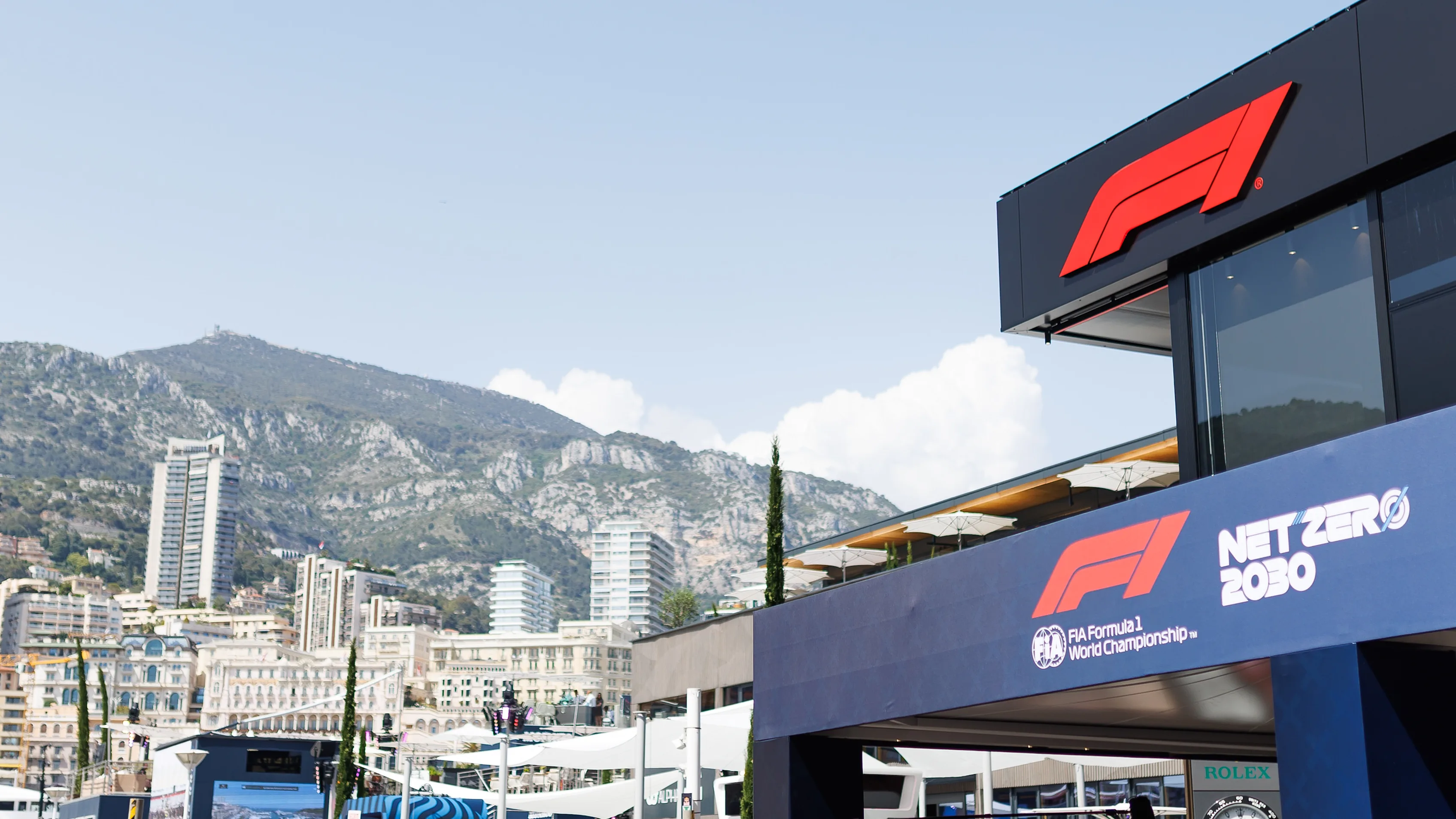
Our beginner’s guide provides all you need to know about the F1 calendar, while also explaining how it has developed since the sport’s inaugural season in 1950.
What is the 2025 F1 calendar?
The 2025 calendar marks the 75th anniversary of the FIA Formula One World Championship. The season begins in Australia (March 14-16), before heading to China (March 21-23) – which also hosts the first F1 Sprint of 2025.
READ MORE: FIA and Formula 1 announce calendar for 2025
The process of creating a better geographical flow of races continues, with Japan (April 4-6) hosting the third event of the season, before the Bahrain (April 11-13) and Saudi Arabian (April 18-20) Grands Prix take place – held later in the year than usual with Ramadan happening throughout March.
A trip to Miami (May 2-4) for Round 6 is followed predominantly by the European races, followed by visits to Azerbaijan (September 19-21) and Singapore (October 3-5). F1 then returns to the Americas before Qatar (November 28-30) and Abu Dhabi (December 5-7) finish the season back-to-back.
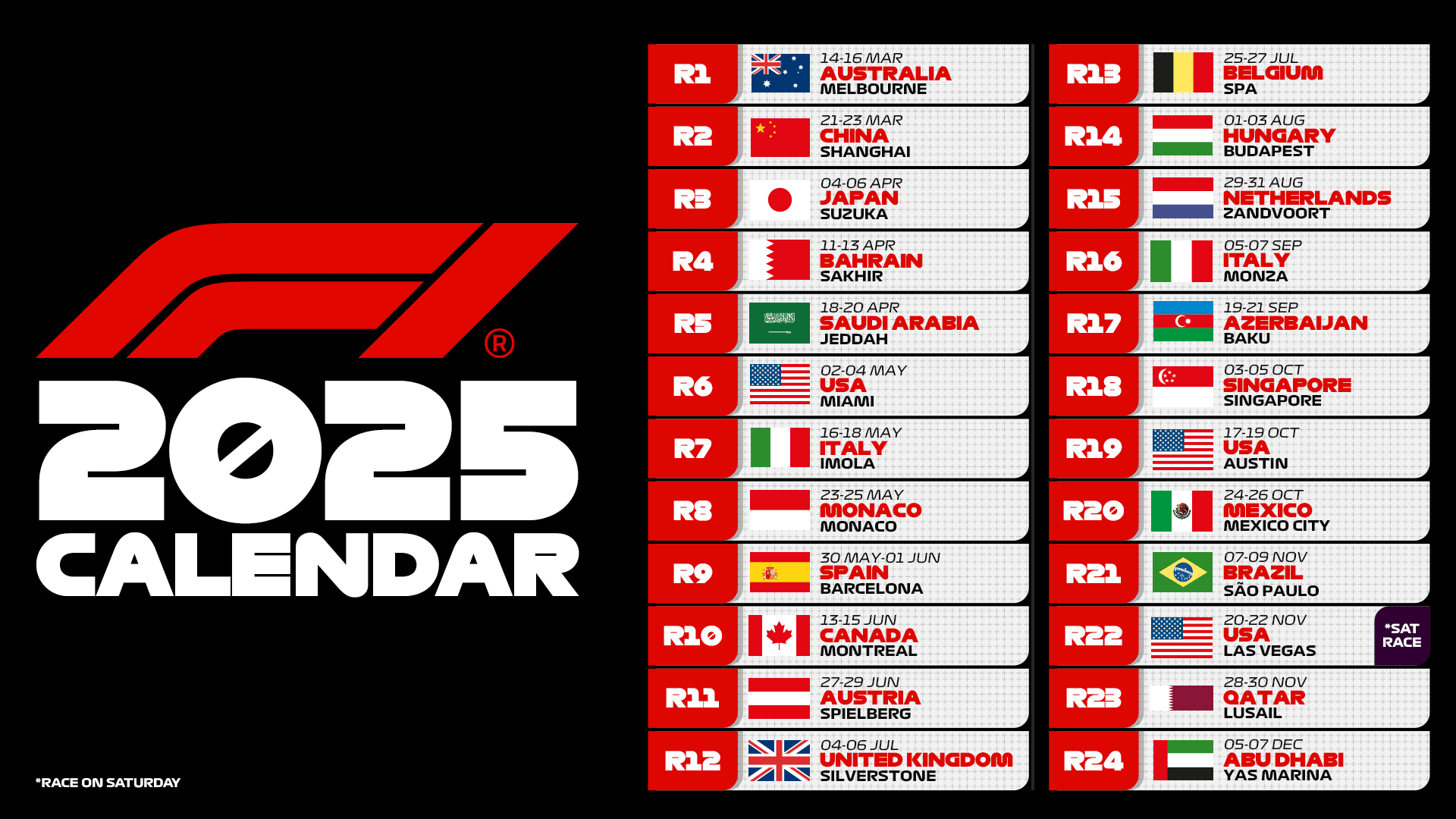
When does the 2025 F1 season start?
The Bahrain International Circuit will host three days of pre-season testing on February 26-28 before the season opener two weeks later.
The 2025 Formula 1 season begins with a double-header, starting with the Australian Grand Prix at Albert Park in Melbourne on March 16, before heading to Shanghai the following week for the Chinese Grand Prix on March 23. The Shanghai International Circuit also hosts the first F1 Sprint of 2025 on March 22.
READ MORE: The key differences and stand outs from the 2025 F1 calendar
When does the 2025 F1 season finish?
The 2025 Formula 1 season concludes with a double-header in the Middle East. The Qatar Grand Prix weekend (November 28-30) also hosts the final F1 Sprint of the season, before the Abu Dhabi Grand Prix wraps up the year at Yas Marina Circuit on December 7.
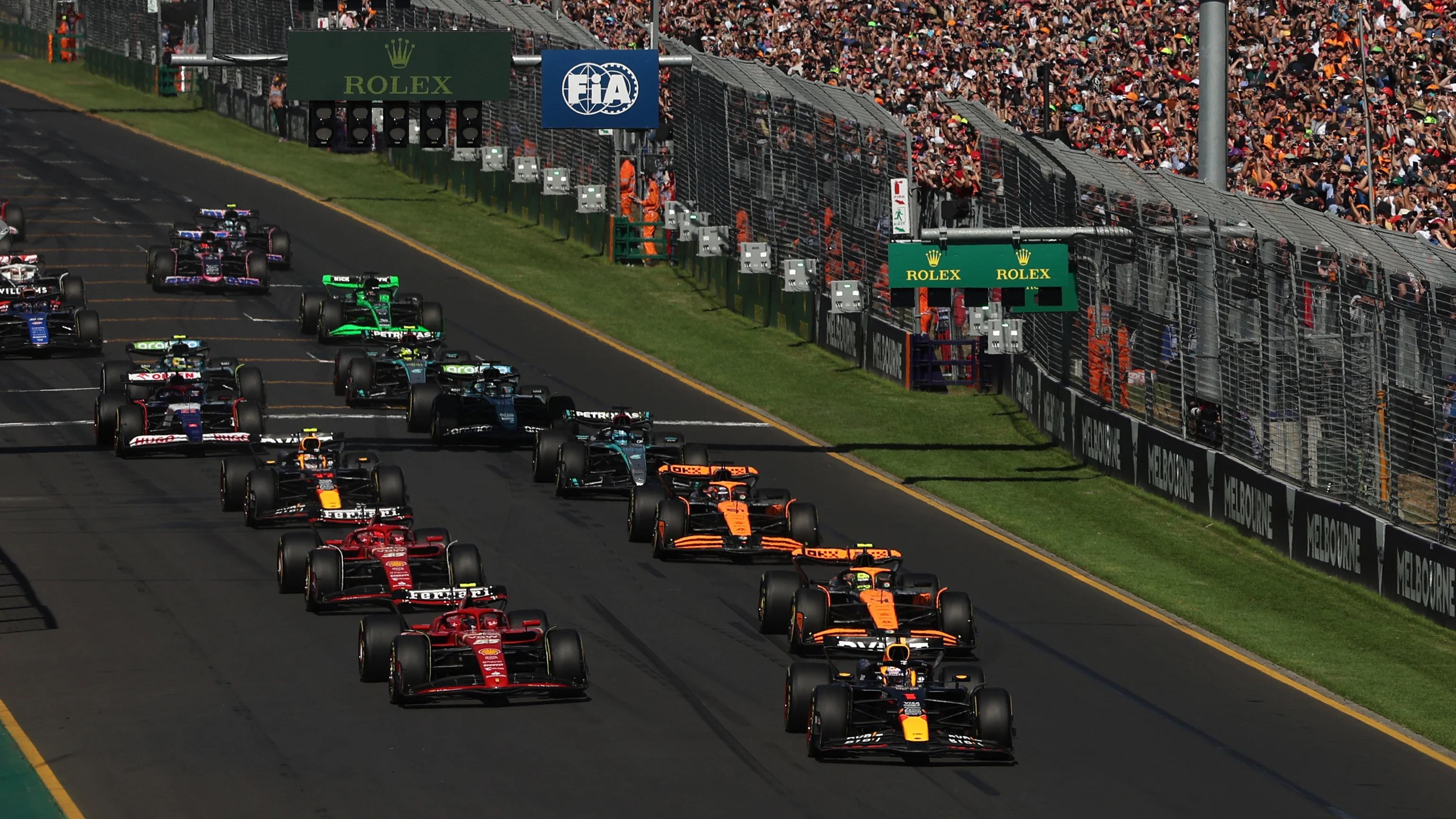
How many races are on the 2025 F1 calendar?
The 2025 Formula 1 calendar features 24 Grand Prix weekends, including six F1 Sprint races, taking place around the world from March through December.
A total of 21 countries across five continents are on the schedule. Classic tracks such as Silverstone, Spa-Francorchamps and Suzuka, combined with more recent additions including Las Vegas, Miami and Saudi Arabia give an exciting and varied selection of circuits that offers plenty to look forward to.
READ MORE: Everything you need to know about F1 – Drivers, teams, cars, circuits and more
2025 F1 calendar
| Date | Country | Venue |
|---|---|---|
| March 14-16 | Australia | Melbourne |
| March 21-23 | China | Shanghai |
| April 4-6 | Japan | Suzuka |
| April 11-13 | Bahrain | Sakhir |
| April 18-20 | Saudi Arabia | Jeddah |
| May 2-4 | USA | Miami |
| May 16-18 | Italy | Imola |
| May 23-25 | Monaco | Monaco |
| May 30 – June 1 | Spain | Barcelona |
| June 13-15 | Canada | Montreal |
| June 27-29 | Austria | Spielberg |
| July 4-6 | United Kingdom | Silverstone |
| July 25-27 | Belgium | Spa |
| August 1-3 | Hungary | Budapest |
| August 29-31 | Netherlands | Zandvoort |
| September 5-7 | Italy | Monza |
| September 19-21 | Azerbaijan | Baku |
| October 3-5 | Singapore | Singapore |
| October 17-19 | USA | Austin |
| October 24-26 | Mexico | Mexico City |
| November 7-9 | Brazil | Sao Paulo |
| November 20-22 | USA | Las Vegas |
| November 28-30 | Qatar | Lusail |
| December 5-7 | Abu Dhabi | Yas Marina |
How many F1 Sprint events are there in 2025?
Six circuits will host F1 Sprint weekends in 2025 – the fifth season of the Sprint format.
The exciting 2025 roster sees China and Miami on the Sprint line-up for a second consecutive year, joining Austin and Qatar which both return to host their third Sprint events. Belgium returns to the line-up for the first time since 2023, while Brazil continues its run of hosting a Sprint every year since the format began in 2021.
2025 F1 Sprint calendar
| Date | Country | Venue |
|---|---|---|
| March 21-23 | China | Shanghai |
| May 2-4 | USA | Miami |
| July 25-27 | Belgium | Spa-Francorchamps |
| October 17-19 | USA | Austin |
| November 7-9 | Brazil | Sao Paulo |
| November 28-30 | Qatar | Lusail |
What is the 2026 F1 calendar?
Formula 1 and the FIA have announced the calendar for the 2026 FIA Formula One World Championship, with drivers and teams set to embark on another 24-round campaign as new technical regulations and advanced sustainable fuels come into play.
Starting with the Australian Grand Prix on the weekend of March 6-8 and concluding with the Abu Dhabi Grand Prix from December 4-6, the F1 community will visit five of the world’s seven continents over the course of the year.
The calendar sees further improvements to the geographical flow of races, including the Canadian Grand Prix now following Miami in an earlier slot, delivering significant freight efficiencies as some equipment can move directly from one event to the other.
This change creates a consolidated European leg of the season, when F1 will celebrate the final Dutch Grand Prix and Madrid joins the calendar with a new circuit, before the championship returns to Asia ahead of a triple header in the Americas, with Las Vegas, Qatar and Abu Dhabi then closing out the season.
What are ‘double-headers’ and ‘triple-headers’?
Traditionally, F1 races were planned with a weekend-on, weekend-off approach, but an expanding calendar brought about by the ever-increasing popularity of the sport led to the arrival of double-headers and, in some cases, triple-headers.
A double-header is a sequence of back-to-back Grands Prix on successive weekends, while a triple-header is three race weekends in a row – venues being grouped together by location where possible. Simply put, this allows for more races within the 52-week year.
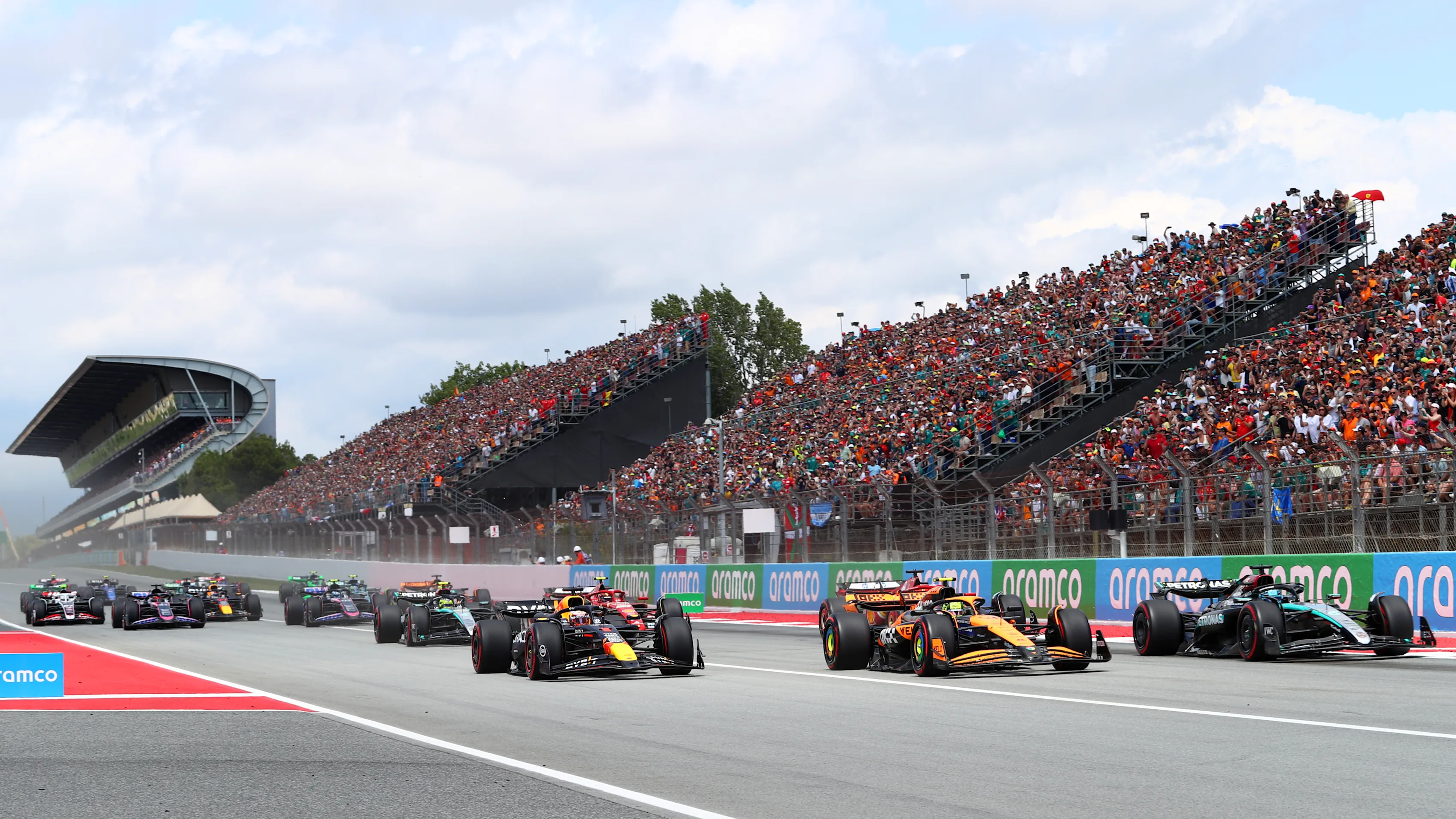
What does the term ‘flyaway race’ mean?
The F1 calendar is a global affair, very much putting the ‘world’ in world championship. But you will often hear those involved differentiating between races held in Europe and those in the rest of the world – the key word being ‘flyaway’.
European rounds allow the teams to transport all their equipment – including the F1 cars themselves – by truck. Events held further afield – in different continents and/or across seas – need other forms of travel, with the paddock being flown or shipped between each venue.
F1 transports all cars from race to race to assist the teams, supported by a partnership with global logistics experts DHL. For some flyaway events, supplementary equipment is sent by sea months in advance.

How does the current calendar compare to F1’s first championship season?
The F1 calendar of today differs greatly to the one agreed for the first year of the world championship in 1950. Back then, there were only seven races and they were spread out from May to September, with six held in Europe – the exception being the US-located Indianapolis 500, which most regular F1 drivers skipped.
New European venues gradually arrived as Formula 1 established itself, while the first overseas addition came in 1953 as teams headed to Argentina in South America for the first time. Since then, the sport has expanded to North America, Asia, Australia and the Middle East, with races having also been held in Africa.
READ MORE: The beginner’s guide to the F1 Drivers’ Championship
Monaco, Monza, Silverstone and Spa are circuits that still feature on the F1 calendar from the very first season in 1950, although plenty of safety-based changes and track layout modifications have been made since then.

Next Up
Related Articles
 The best moments from F1 Secret Santa over the years
The best moments from F1 Secret Santa over the years.webp) End Of Year Reports 2025Ferrari’s best and worst moments from 2025
End Of Year Reports 2025Ferrari’s best and worst moments from 2025 ExclusiveHow Bearman went from super-sub to star rookie in 2025
ExclusiveHow Bearman went from super-sub to star rookie in 2025 ExclusiveWhy Gasly feels ‘ready for my time’ in F1
ExclusiveWhy Gasly feels ‘ready for my time’ in F1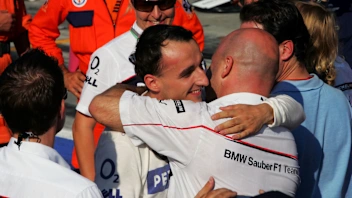 Sauber’s best moments and most memorable liveries in F1
Sauber’s best moments and most memorable liveries in F1.webp) End Of Year Reports 2025Aston Martin’s best and worst moments from 2025
End Of Year Reports 2025Aston Martin’s best and worst moments from 2025